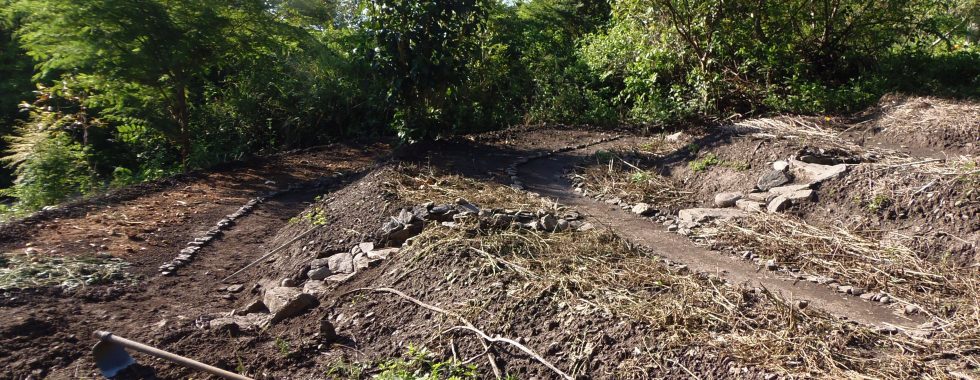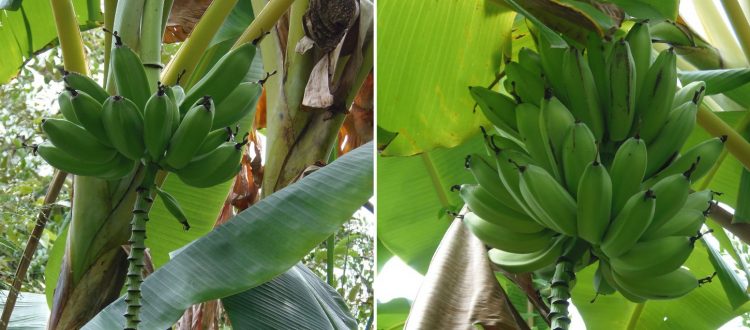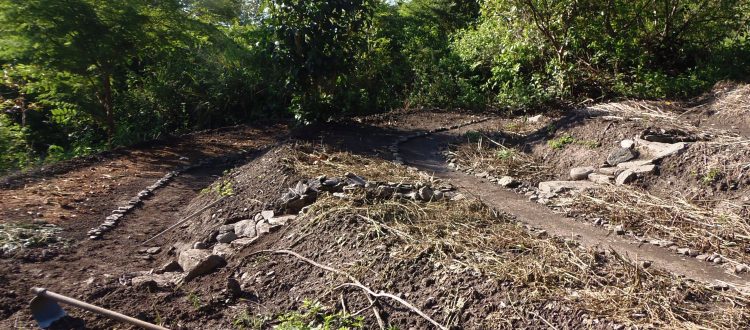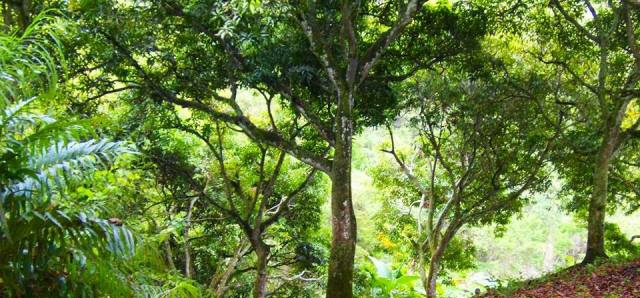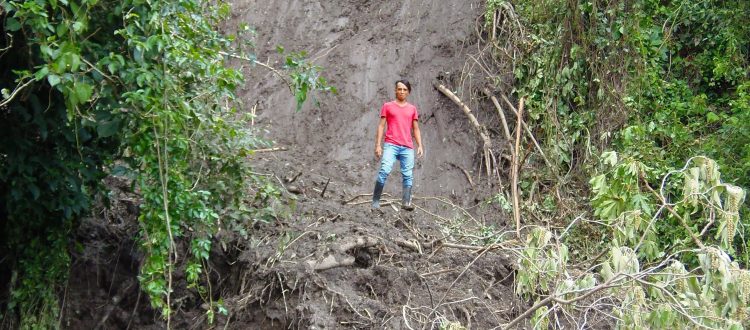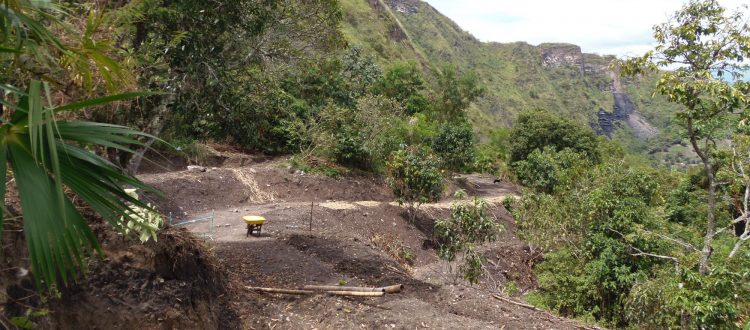We’re pretty sure most people would have difficulty recognizing our land as a farm. There are no neatly kept beds filled with straight rows of vegetables. Instead our land is terraced and follows the contour lines of the landscape. All plants are mixed with other vegetables, trees and weeds. We have areas that grow bigger crops, like bananas, sugar cane, papaya and pigeon pea. Other areas have more trees, like mango, avocado, cacao. We have a vegetable garden as well which is still a bit in a test phase.
The work on improving the land started in October 2015. Cris’ uncle was visiting for a couple of weeks and although he’s in his sixties, he’s a real beast with a machete so we asked him to clear a part of the land that was overgrown. Back then we didn’t know this would become our veggie garden. We had a test garden in another part of the farm and it was clear that we had to relocate it, because it was quite a climb to get to it. We just put it there because it was an open space and we had to start at least something going.

After cutting down the regrowth the area turned out to be quite a nice, gentle sloped valley. Rainwater naturally collects in this area, it is right next to our valley dam and we’re planning to build our house about 20 meters away from it, so all factors pointed to this area becoming part of our zone 1 garden.
Next we let the pigs in to root everything up and manure the area.

Then it was up to us to work the landscape. To minimize erosion and maximize rainwater infiltration of the soil we decided to swale and terrace the whole area. The terraces keep water flows calm and in severe rain events the swales transport excess water to our valley dam.

After we had some rain in May, we started planting and seeding the swales and terraces. Below you can see the first papayas planted in one of the swales.

Just a few months later they were over a meter tall already. On the right there’s a pigeon pea, in the middle a small pineapple. Flattening the land, loosening the soil and the pig manure made a big difference!

Encouraged by the improvements we saw we took on the next field to start the process of terracing all land in the middle of our farm, the most intensively used area.



This is obviously a lot of work, but since it pays off big time, it’s worth the effort. We expect our terracing work to continue in bits and pieces until we’ve done about a hectare in 2018 or 2019.


